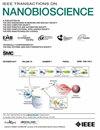基于原子力显微镜的无模型拟合粘弹性表征方法,用于原发性前列腺肿瘤的精确分级
IF 3.7
4区 生物学
Q1 BIOCHEMICAL RESEARCH METHODS
引用次数: 0
摘要
粘弹性是细胞的一个重要特性,在无标记细胞表征中发挥着重要作用。本文报告了一种无模型拟合的粘弹性计算方法,修正了频率、表面附着力和液体阻力对原子力显微镜力-距离(FD)曲线的影响。通过量化 PC-3 细胞的粘度和弹性模量,该方法显示出高度的自洽性,对加载频率和加载模式(力-体积与峰值力攻丝)等实验参数的依赖性很小。另一个优点是计算速度快,每条曲线的计算速度不到 1 毫秒,无需模型拟合过程。此外,该方法还用于表征来自 38 名患者的原发性临床前列腺细胞的粘弹性特性。结果表明,所报告的表征方法在前列腺癌细胞分级方面的性能与格里森评分系统相当,在区分低危前列腺肿瘤(BPH 和 GS6)和高危前列腺肿瘤(GS7-GS10)方面的平均准确率高达 97.6%,在区分前列腺增生症和前列腺癌方面的平均准确率高达 93.3%。本文章由计算机程序翻译,如有差异,请以英文原文为准。
An AFM-Based Model-Fitting-Free Viscoelasticity Characterization Method for Accurate Grading of Primary Prostate Tumor
Viscoelasticity is a crucial property of cells, which plays an important role in label-free cell characterization. This paper reports a model-fitting-free viscoelasticity calculation method, correcting the effects of frequency, surface adhesion and liquid resistance on AFM force-distance (FD) curves. As demonstrated by quantifying the viscosity and elastic modulus of PC-3 cells, this method shows high self-consistency and little dependence on experimental parameters such as loading frequency, and loading mode (Force-volume vs. PeakForce Tapping). The rapid calculating speed of less than 1ms per curve without the need for a model fitting process is another advantage. Furthermore, this method was utilized to characterize the viscoelastic properties of primary clinical prostate cells from 38 patients. The results demonstrate that the reported characterization method a comparable performance with the Gleason Score system in grading prostate cancer cells, This method achieves a high average accuracy of 97.6% in distinguishing low-risk prostate tumors (BPH and GS6) from higher-risk (GS7-GS10) prostate tumors and a high average accuracy of 93.3% in distinguishing BPH from prostate cancer.
求助全文
通过发布文献求助,成功后即可免费获取论文全文。
去求助
来源期刊

IEEE Transactions on NanoBioscience
工程技术-纳米科技
CiteScore
7.00
自引率
5.10%
发文量
197
审稿时长
>12 weeks
期刊介绍:
The IEEE Transactions on NanoBioscience reports on original, innovative and interdisciplinary work on all aspects of molecular systems, cellular systems, and tissues (including molecular electronics). Topics covered in the journal focus on a broad spectrum of aspects, both on foundations and on applications. Specifically, methods and techniques, experimental aspects, design and implementation, instrumentation and laboratory equipment, clinical aspects, hardware and software data acquisition and analysis and computer based modelling are covered (based on traditional or high performance computing - parallel computers or computer networks).
 求助内容:
求助内容: 应助结果提醒方式:
应助结果提醒方式:


